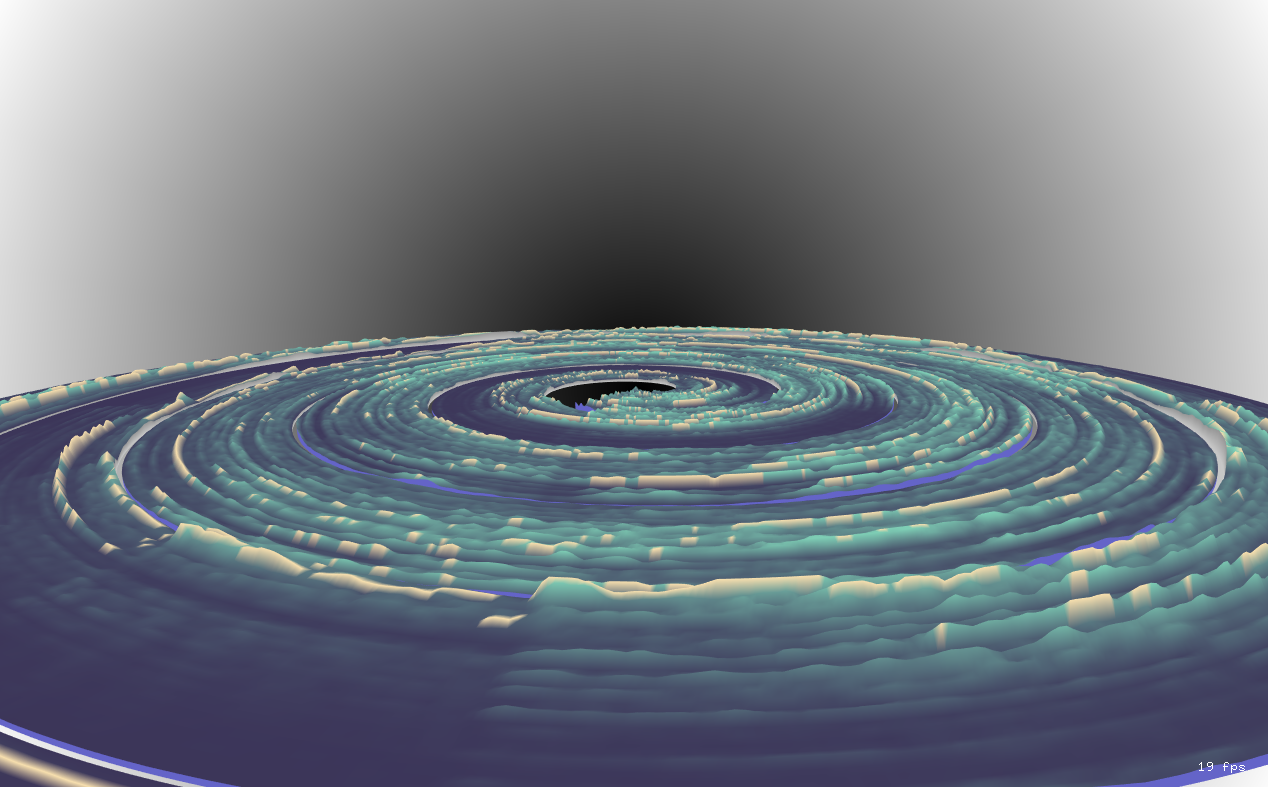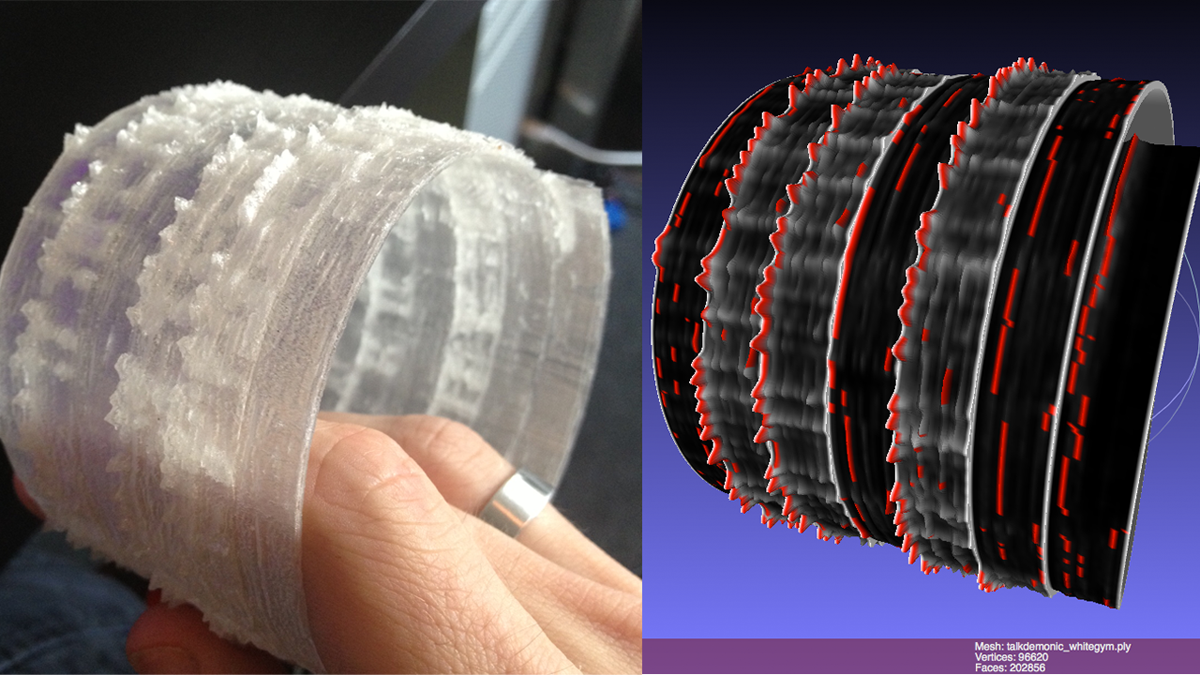For those of you longing to see and touch your favorite tunes, Blair Neal, an artist and creative technologist based in New York is using 3D modeling to explore the relationship between sound and image. Neal has just released an open source application that allows users to use FFT data of songs and music to create 3D models. These models can then be scaled, giving users the chance to both visualize and 3D print their favorite song.
The app runs an FFT audio analysis of the sounds coming in and splits out the intensity of different frequencies. This means that the analysis can separate cymbals from guitars from bass. Once the audio is analyzed, then the user can explore making a physical model of the song. To the right is the high end of sounds; to the left is the low/bass end. The loudest frequency is marked by red and orange, while white to black shows the relative volume intensity through time. To make the object more coarse and fine, you can adjust the number of frequency bands the app is looking at.
The app settings work best for songs at a default maxes at 3000hz instead of 20khz and will start to max out at 5-6 minutes of music capture. There are a few more detailed instructions on how to access the app on Neal’s website, so be sure to read through them. Neal states on his website that the app is not a finished product, but that “it should be usable for those willing to tinker – use at your own risk and expect to tweak settings.”
Blair Neal began this project in 2013 while experimenting with using music data as a physical structure. He says, “It allows me to look at the structure of a song in a different way than a musical score or just a graph of the intensity of sounds and frequencies. I get a very different sense of the dynamic range and structure of certain songs when viewing them in this way. “
Now, all Neal needs is musicians with whom to test out the technology. So far, he’s only 3D printed a couple of models about the size of a coffee cup, but he hopes to be able to do larger scale models eventually. If you are a musician who wants to 3D model and print your songs, Neal encourages you to check out his website and get in touch with him.





